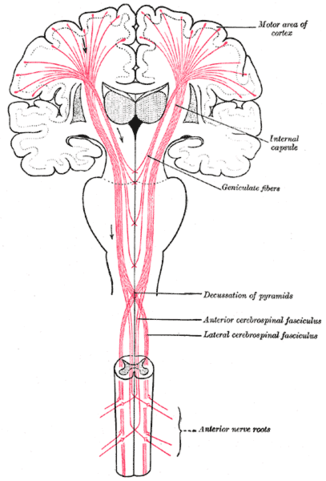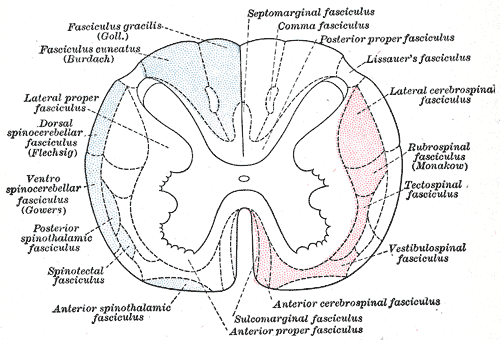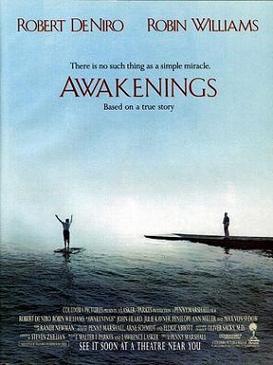2018-10-19 10:53:44
Prelude
Prelude
Today's Topics
- The neuroscience of action
- Quiz 2 now available; due next Friday
Muscle classes
- Axial
- Trunk, neck, hips
- Proximal
- Shoulder/elbow, pelvis/knee
- Distal
- Hands/fingers, feet/toes
Muscles
Muscle types
- Smooth
- Arteries, hair follicles, uterus, intestines
- Regulated by ANS (involuntary)
- Striated (striped)
- Skeletal
- Voluntary control, mostly connected to tendons and bones
- Cardiac
Muscle types
How skeletal muscles contract
- Motoneuron (ventral horn of spinal cord)
- Neuromuscular junction
- Releases ACh
From spinal cord to muscle
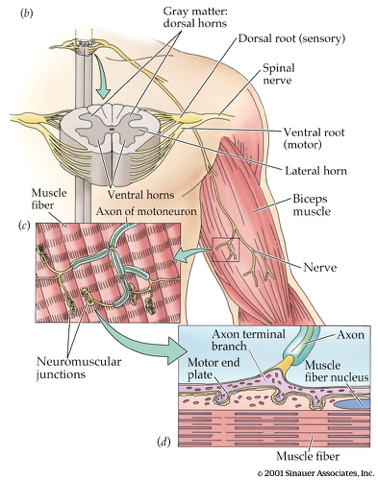
How skeletal muscles contract
- Motor endplate
- Nicotinic ACh receptor
- Excitatory endplate potential
- Muscle fibers depolarize
- Depolarization spreads along fibers like an action potential
- Sarcomeres are segments of fibers
- Intramuscular stores release Ca++
Motor endplate
How skeletal muscles contract
- Myofibrils (w/in sarcomere)
- Actin & mysosin proteins
- “Molecular gears”
- Bind, move, unbind in presence of Ca++, ATP
Anatomy of muscle fibers
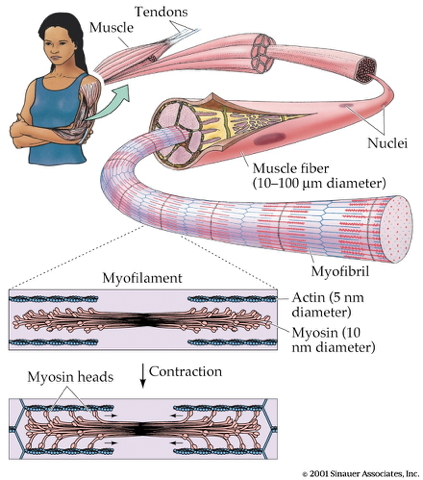
Anatomy of motor endplate
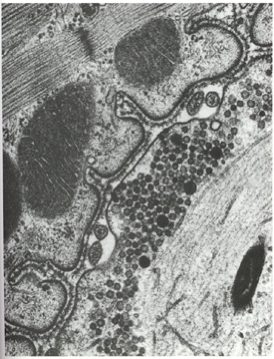
Muscle contraction
Agonist/antagonist muscle pairs
Meat preference?

Muscle fiber types
- Fast twitch/fatiguing
- Type II
- White meat
- Slow twitch/fatiguing
- Type I
- Red meat
Muscles are sensory organs, too!

Two muscle fiber types
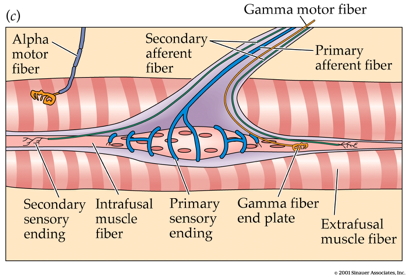
Two muscle fiber types
- Intrafusal fibers
- Sense length/tension
- Contain muscle spindles linked to Ia afferents
- ennervated by gamma (\(\gamma\)) motor neurons
- Extrafusal fibers
- Generate force
- ennervated by alpha (\(\alpha\)) motor neurons
Monosynaptic stretch (myotatic) reflex
- Muscle stretched (length increases)
- Muscle spindle in intrafusal fiber activates
- Ia afferent sends signal to spinal cord
- Activates alpha (\(\alpha\)) motor neuron
- Muscle contracts, shortens length
Monosynaptic stetch (myotatic) reflex
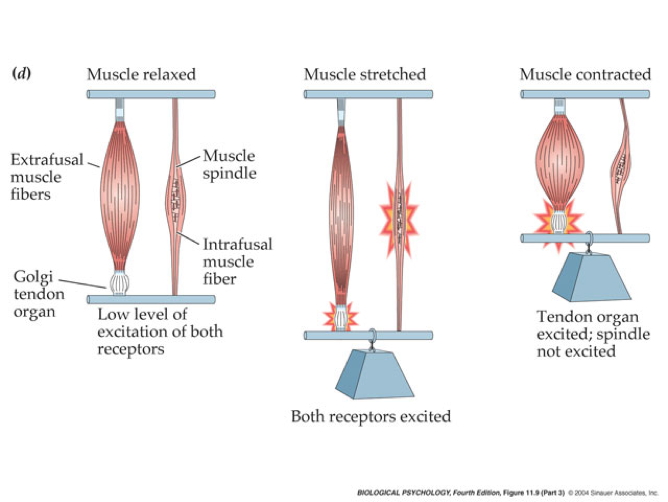
- Gamma (\(\gamma\)) motor neuron fires to take up intrafusal fiber slack
:max_bytes(150000):strip_icc():format(webp)/HowtoBelay_3-571117903df78c3fa293859d.jpg)
Monosynaptic stretch (myotatic) reflex
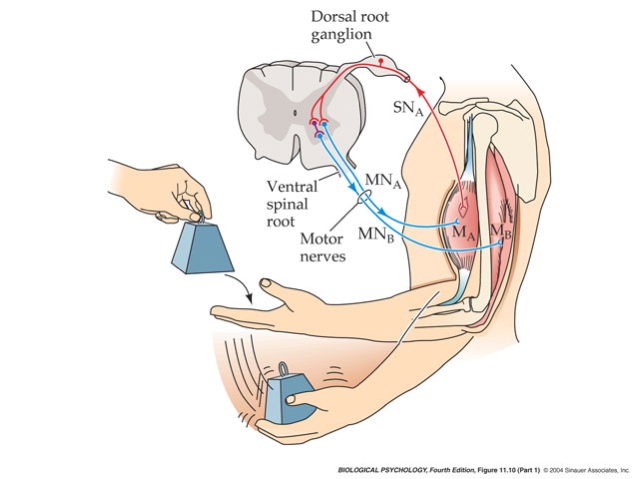
Why doesn't antagonist muscle respond?

Why doesn't antagonist muscle respond?
- Polysynaptic inhibition of antagonist muscle
- Prevents/dampens tremor
Brain gets fast(est) sensory info from spindles
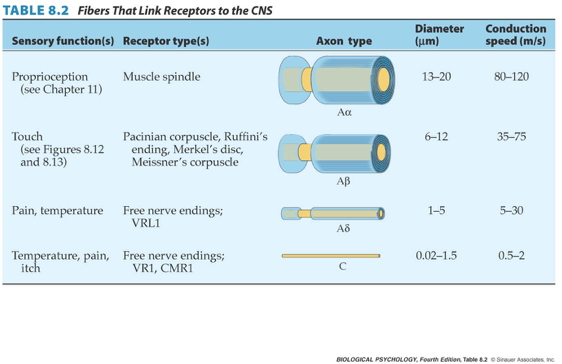
How the brain controls the muscles
- Pyramidal tracts
- Pyramidal cells (Cerebral Cortex Layer 5) in primary motor cortex (M1)
- Corticobulbar (cortex -> brainstem) tract
- Corticospinal (cortex -> spinal cord) tract
- Crossover (decussate) in medulla
- L side of brain ennervates R side of body
Corticospinal tract
How the brain controls the muscles
- Extrapyramidal system
- Tectospinal tract
- Vestibulospinal tract
- Reticulospinal tract
- Involuntary movements
- Posture, balance, arousal
Extrapyramidal system
Disorders
- Parkinson's
- Huntington's
The Faces of Parkinson's
Parkinson's
- Slow, absent movement, resting tremor
- Cognitive deficits, depression
- DA Neurons in substantia nigra degenerate
- Treatments
- DA agonists
- DA agonists linked to impulse control disorders in ~1/7 patients (Ramirez-Zamora, Gee, Boyd, & Biller, 2016)
- Levodopa (L-Dopa), DA precursor
Awakenings
Huntington's
Huntington's
- Formerly Huntington’s Chorea
- "Chorea" from Greek for "dance"
- “Dance-like” pattern of involuntary movements
- Cognitive decline
- Genetic + environmental influences
- Disturbance in striatum
- No effective treatment
Huntington's
Remember
- Control of movement determined by multiple sources
- Cerebral cortex + basal ganglia + cerebellum + spinal circuits
Multiple, parallel controllers
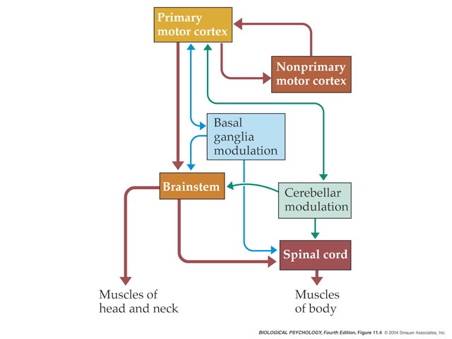
Cerebellum as predictor of future sensory states? (Ito, 2008)
The Real Reason for Brains
What does motor cortex activity encode?

Dynamic systems perspective
- Dynamics of
- World events, \(\dot W\)
- Extero- and interoceptive sensory systems, \(\dot S\)
- Nervous system states, \(\dot N\)
- Muscle states, \(\dot M\)
- Body states, \(\dot B\)
- Effects of muscles on world, \(\dot W = f(\dot M)\)
Next time…
- Language
References
Ito, M. (2008). Control of mental activities by internal models in the cerebellum. Nat. Rev. Neurosci., 9(4), 304–313. https://doi.org/10.1038/nrn2332
Ramirez-Zamora, A., Gee, L., Boyd, J., & Biller, J. (2016). Treatment of impulse control disorders in parkinson’s disease: Practical considerations and future directions. Expert Rev. Neurother., 16(4), 389–399. https://doi.org/10.1586/14737175.2016.1158103




